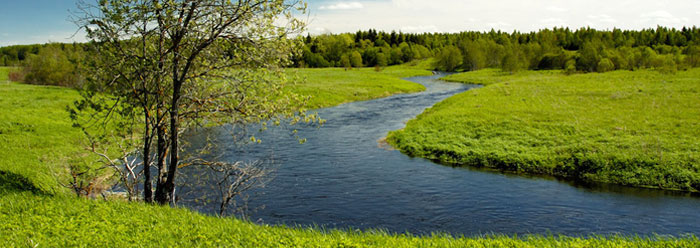The Bible explicitly teaches that the great Flood covered the entire globe. Its primary purpose was to judge the sinful civilization of Noah's day (Genesis 6:7), but this judgment extended to the animals and even the earth (7:22,19). The pre-Flood vegetation is not specifically mentioned, but no doubt the waters devastated all land plants, trees, crops, forests, and swamps. What happened to their remains?
Obviously some plants were buried in Flood sediments and were fossilized. Petrified trees are found in certain layers of Flood-deposited sedimentary rocks worldwide. Often one finds fossilized twigs or leaves or fern impressions, but these are fairly rare. Evidently the majority of plants didn't get fossilized. Where are the rest?
Coal deposits have long been identified as the altered remains of vegetation. The volume of coal and its discovery even in polar regions give us a picture of lush vegetation in a pre-Flood world quite different from our own. There is evidence that the trees typically fossilized in Carboniferous coal seams may have even grown as near-shore floating "islands" with extensive shallow root systems, which became floating mats of vegetation during the Flood. Once buried, they would metamorphose into coal.
Some mats must have been unthinkably large, far larger than any modern peat swamp, for the coals they left behind in some cases cover entire states.
The concept of floating log mats has become a powerful one in Flood geology. Some geologic strata are identified by the presence of wood fragments, giving the impression that the mat was floating in shallow water with its underside abrading on the surface below.
There are also many rock layers which seem to have required rather calm waters for deposition. A floating mat would have had a damping effect on even turbulent Flood waters, calming them at least locally for periods of time allowing deposition of these sediments. The mats may have been a temporary haven during the cataclysmic storm for various animals, helping them survive for weeks or even months, before finally being overwhelmed. Floating vegetation would also have been the place insects could have survived, particularly in their egg and larva stages, ensuring that they would be distributed worldwide to facilitate regrowth and pollination of plants from seeds, springs, and spores once the Flood was over.
The Bible only mentions one such case of regrowth, that of the olive branch returned to Noah in the Ark by the dove. Olive trees are quite hardy, and the concept of a floating olive tree sprig, grounded by the receding waters, and sprouting in a short period of time is quite reasonable.
And such is the case for all the details of the Flood account. Its global magnitude may astound us, but taken as a whole and at face value, the difficulties always resolve themselves as we study and believe.
* Dr. John Morris is President of the Institute for Creation Research.
Cite this article: Morris, J. 1999. What Happened To Land Plants During The Flood? Acts & Facts. 28 (10).










